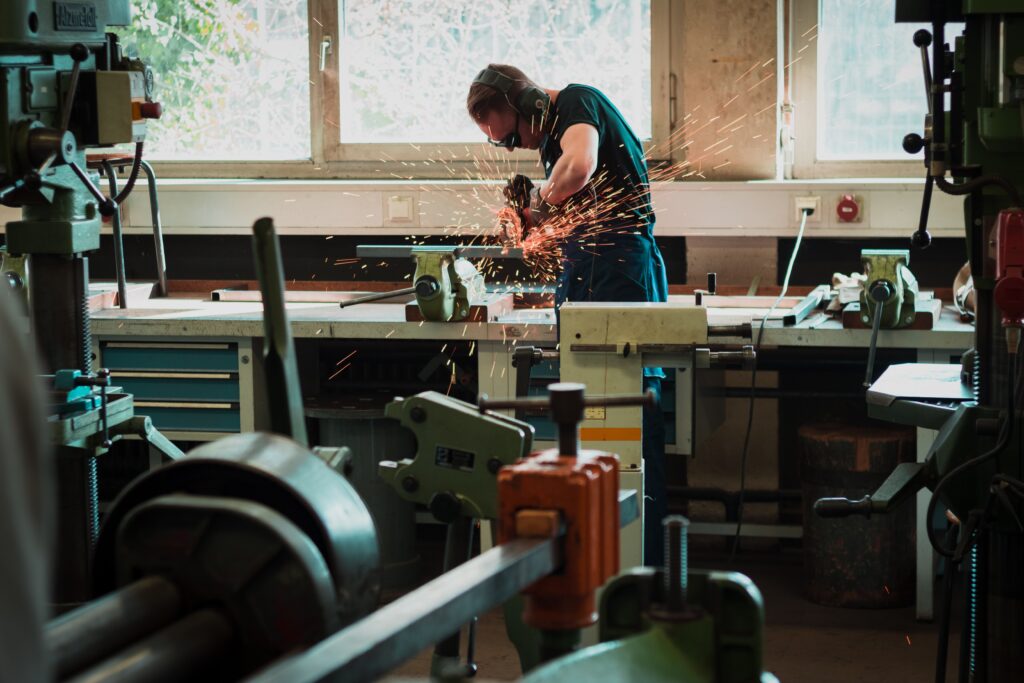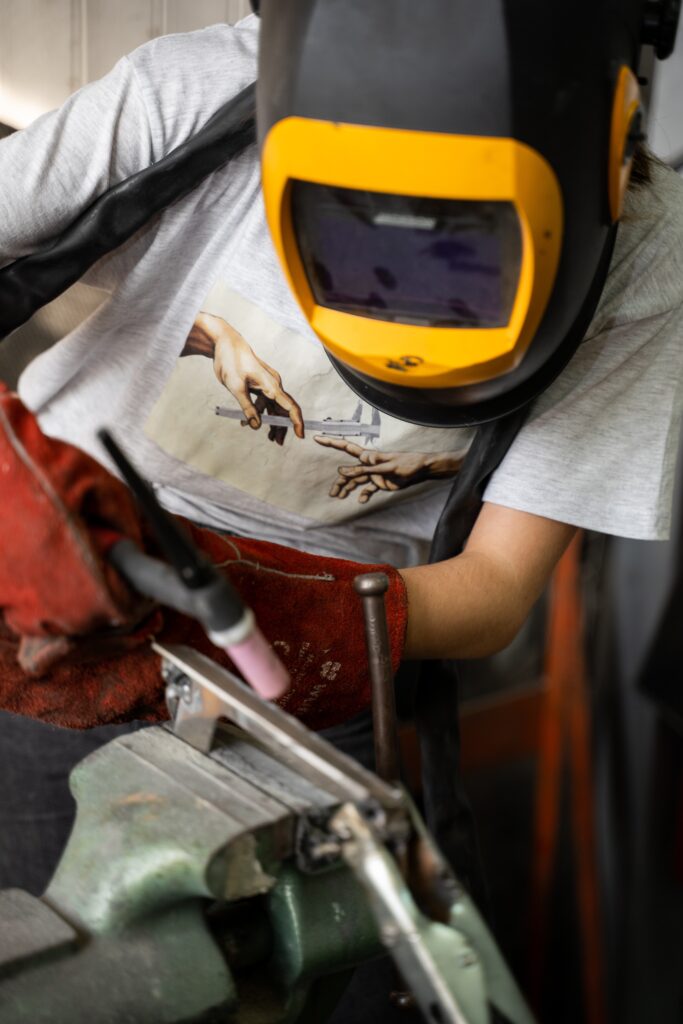Envision this: A page lies before you, crackling with knowledge yet to be discovered. On the horizon, we have a thrilling discourse centering on the question: “Do Welders Get Lung Disease?” Feel your curiosity piqued as it takes you by the hand, guiding you through the labyrinth of welding occupation, its potential risks and the details around lung disease. As you journey through the lines, brace yourself for a transformative exploration that fuses science, health, and the welding profession into a seamless whole.

Understanding the Profession of Welding
Definition of welding
Welding is a fabrication process that involves joining two or more parts, usually metals, by means of heat, pressure or both. The professionally-skilled individual who performs welding is known as a welder. Welders use an array of tools and techniques such as electric arcs, lasers, friction, ultrasound, and even certain types of gas to melt the areas between work pieces and join them together.
Importance of welding in various industries
Welding is a critical process in countless industries, playing a key role in the production of automobiles, ships, aircraft, trains, and more. It’s also essential in construction, specifically in the building of commercial high-rise towers, bridges, pipelines, and in the residential sector. The manufacturing industry also relies heavily on welding for creating everything from furniture to heavy machinery.
Typical workplace settings for welders
Welders typically work in a range of different settings. Many operate in the manufacturing sector, in factories and workshops, while others work in construction, often on-site. Some welders also ply their trade in shipyards, power plants, the oil and gas industry and in the railway industry. The working environment can often be physically demanding and potentially hazardous.
The Connection between Welding and Lung Disease
How welding can impact the respiratory system
While welding can be a profitable and rewarding profession, it does come with certain health risks. The high heat and materials involved in welding often emit a variety of fumes and gases that, when inhaled, can lead to serious respiratory conditions, including various forms of lung disease.
The role of air pollution in welding environments
Air pollution in welding environments is a serious concern. The welding process can release a mixture of potentially toxic airborne particles, gases and fumes, such as chromium, nickel, zinc, cadmium, and manganese, among others. It’s these harmful substances that welders can inhale, leading to health issues over time.
Common lung diseases among welders
Some common lung diseases that welders are at risk of developing include occupational asthma, chronic obstructive pulmonary disease (COPD), lung cancer, and pneumoconiosis – a condition caused by prolonged exposure to dust.

The Nature of Welders’ Exposure to Dangerous Inhalants
Fumes and gases generated during welding
The specific fumes and gases that are generated during welding depend largely on the material being worked on, and the type of welding process being used. Typically, though, they may include hazardous substances such as nitrogen oxides, carbon monoxide, ozone, and shielding gases, along with metallic oxides, silicates and fluorides.
Particles and dust involved in welding processes
In addition to fumes and gases, welding processes often produce particles including metal dust and other tiny fragments. These particles can be easily inhaled and over time can accumulate in the lungs, leading to inflammation and scarring, and ultimately, diseases like pneumoconiosis.
Potential for chronic vs. acute exposure
Both acute (short-term) and chronic (long-term) exposure to welding fumes and gases can pose serious health risks. Yet, it’s the potential for chronic exposure that is particularly concerning, as the effects build up over time and can lead to severe, even life-threatening conditions.
Specific Lung Diseases Linked to Welding
Pneumoconiosis and other occupational lung diseases
Pneumoconiosis is a common occupational lung disease among welders caused by the accumulation of dust in the lungs. Similarly, other occupational lung diseases, such as welding fume fever and metal fume fever, are not uncommon and are typically caused by short-term, high-intensity exposures to certain welding fumes.
Lung cancer and its prevalence among welders
Up there among the greatest risks faced by welders is lung cancer. Studies have shown that welders do indeed have an increased risk of lung cancer compared to the general population. This is typically due to prolonged exposure to carcinogenic substances often found in the fumes generated by certain types of welding processes.
Chronic Obstructive Pulmonary Disorder (COPD) in welding profession
Chronic Obstructive Pulmonary Disorder (COPD) is another condition prevalent in the welding profession. COPD is a type of obstructive lung disease characterized by long-term difficulties in breathing, often due to damage to the alveoli (air sacs) in the lungs. COPD can be a serious, debilitating condition that greatly impacts a person’s quality of life.

Recognizing Signs and Symptoms of Lung Disease
Early signs of lung disease in welders
Early signs of lung disease in welders can sometimes be subtle, but may include a persistent cough, shortness of breath, chest tightness or chest pain, and increased susceptibility to respiratory infections.
Progression of symptoms
As the disease progresses, the symptoms often worsen. A person might experience an overall loss in energy and weight, frequent respiratory infections, ongoing issues with breathing, and in many cases, a significant decrease in lung function.
When to see a healthcare provider
If you’re a welder and have been experiencing any of the above symptoms, it’s important to seek the advice of a healthcare provider as soon as possible. Early detection and treatment can often improve the prognosis of many lung diseases and can help to prevent further damage.
Prevalence and Epidemiology of Lung Disease Among Welders
Rate of lung diseases among welders
Lung diseases among welders seem to be a global concern with studies showing a higher prevalence of adverse respiratory effects in this occupational group when compared to other job categories.
Global figures and comparisons
Global figures and comparisons show that the prevalence of lung diseases in welders is higher in certain countries with higher industrial activity and less stringent health and safety measures. Consequently, the industrialised countries of North America and Western Europe tend to have higher rates of welding-related lung diseases than the developing nations.
Industry-specific prevalence
The prevalence of lung disease among welders also varies depending on the specific industry. For instance, industries that require stainless steel welding, which often produces highly toxic fumes, tend to have a higher prevalence of lung disease among welders.
Prevention and Safety Measures for Welders
Importance of personal protective equipment (PPE)
One of the most effective ways to reduce exposure to hazardous substances during welding is by using personal protective equipment (PPE). This may include respiratory protective equipment (RPE) such as masks or breathing apparatus, in order to lower the amount of harmful particles inhaled.
Proper ventilation in the workspace
Another effective safety measure is ensuring proper ventilation in the workspace. Employing systems that efficiently remove the hazardous fumes and gases so they can’t be breathed in greatly reduces the risk of lung disease. Efforts can also be made to substitute some materials and procedures with safer alternatives.
Regular health check-ups for early detection
It is also important for welders to have regular health check-ups, particularly respiratory health assessments, to ensure any early signs of lung disease can be identified and treated as soon as possible.
Role of Employers in Protecting Welders from Lung Disease
Workplace safety regulations
Employers have a key role to play in ensuring the safety of welders. They are required to comply with workplace safety regulations related to welding activities, which might include providing appropriate ventilation and protective equipment, among other things.
Employer’s duty to provide necessary protection
It’s also the duty of an employer to provide necessary protection against the hazards of the profession. This includes conducting a thorough risk assessment, implementing suitable control measures, and ensuring that employees are properly trained and informed about the potential risks.
Employee education about risks and safety
Employers should ensure that their employees are fully aware of the risks they’re exposed to on the job, and how to protect themselves. This includes providing education and training on recognizing the signs of potential diseases, understanding the importance of protective equipment and ventilation, and the importance of regular health monitoring.
Legal Rights and Compensation for Welders with Lung Disease
Welders’ rights under occupational health and safety laws
Welders, like all workers, have certain rights under occupational health and safety laws. If a welder develops lung disease as a result of their work, they might be entitled to compensation for medical expenses, loss of income, and other related costs.
Process of seeking compensation for occupational lung disease
In the event of a diagnosis, it’s important to consult with professionals who understand the legal and medical complexities involved. The process of seeking compensation typically involves proving that the disease was caused by exposures at work.
Notable legal cases involving welders and lung disease
There have been numerous legal cases involving welders who have developed lung disease, with significant compensation awarded. These cases serve as a reminder of the risks and responsibilities associated with the welding profession, and the importance of taking adequate safety precautions.
Current Research on Welding and Lung Disease
Recent scientific studies on the topic
Scientific research is continually being conducted to better understand the risks associated with welding and the development of lung diseases. This research seeks to improve the understanding of the constituents of welding fumes, the specific health impacts, and the effectiveness of various protection measures.
Progress in treatment and prevention research
Encouragingly, there’s been significant progress in both treatment and prevention research in this area. New methods of treatment are being developed, and existing ones improved upon, while there’s also a greater focus on prevention methods such as improved ventilation and respirator technology.
The future of welding with regard to lung health
With ongoing research into the effects of welding on lung health, more comprehensive safety measures and regulations, and widespread awareness and education, the aim is to minimize the risk of lung disease in the welding profession in the future. It’s a clear reminder that while welding is an essential trade, it’s equally necessary to prioritize the health and safety of those doing the work.
